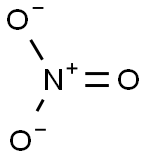Nitrate is commonly found in drinking water sources especially
in agricultural areas where nitrogen fertilizer is used, and where
unregulated shallow private wells are more at the risk of
contamination. The World Health Organization (WHO)
guideline of 50 ppm and the US maximum contaminant level
(MCL) of 45 ppm for nitrate in drinking water have been
established for protecting infants from methemoglobinemia,
commonly known as blue baby syndrome. The health protective
value continues to be a subject of public health interest for
many years, with varying opinion on whether it is too high or
too low. Evaluation of nitrate will need to include consideration
of nitrite because both are closely related in the nitrogen
cycle in the environment and the body, and nitrite plays
a major role in inducing toxicity after its formation from
nitrate. More recently, reports of nitrate in drinking water,
especially at levels higher than 50 ppm, have been associated
with other health effects other than methemoglobinemia. This
toxicological review provides an update on the health effects of
nitrate with a focus on methemoglobinemia, reproductive and
developmental effects, potential carcinogenicity, and especially
endocrine/thyroid effects.
